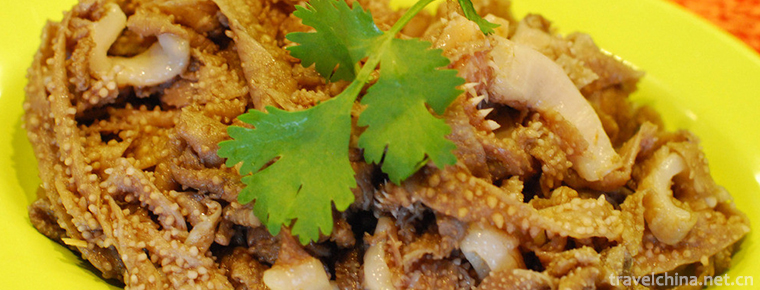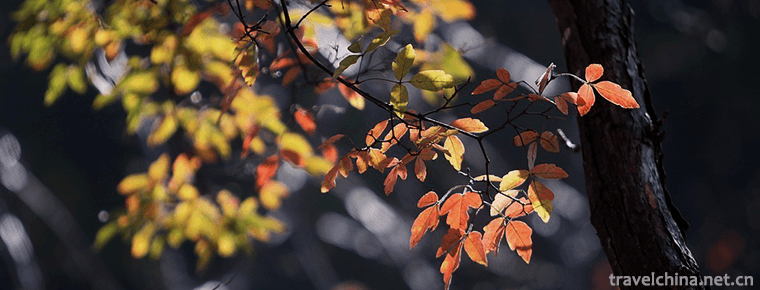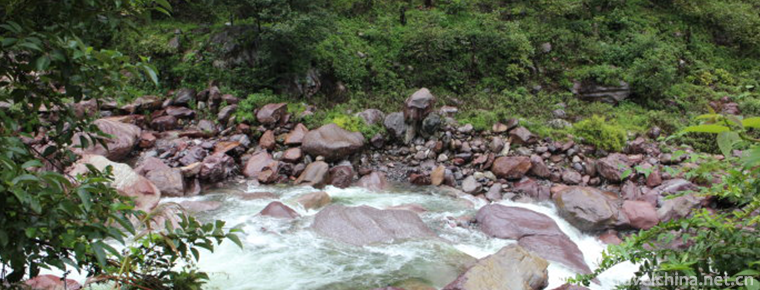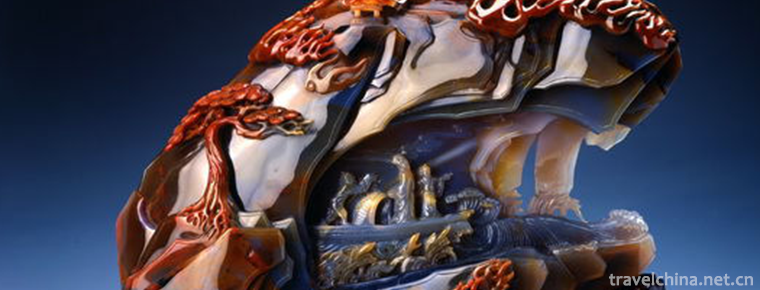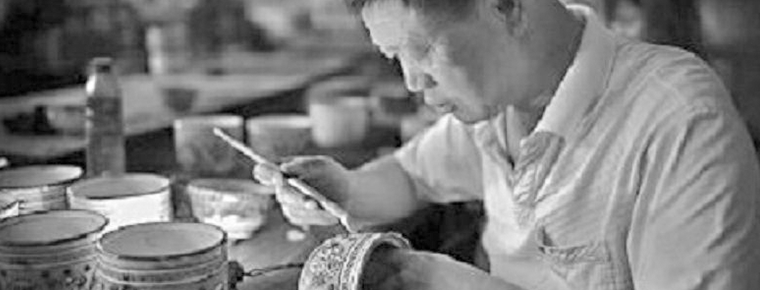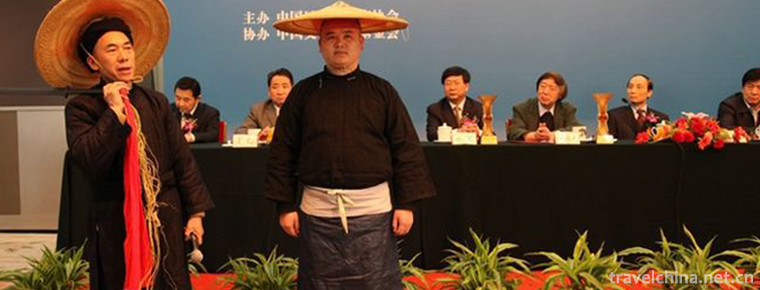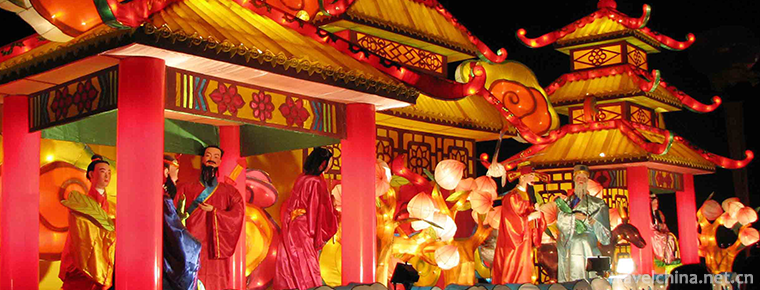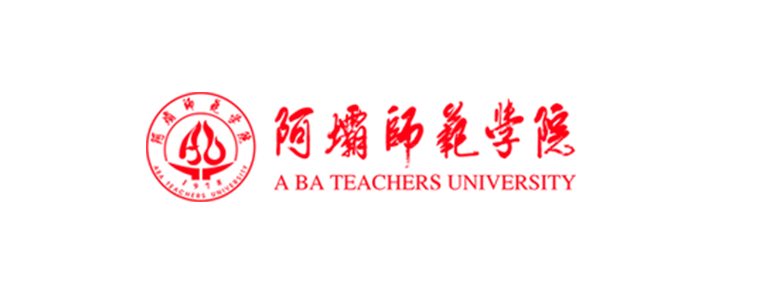Material liao qi
Material lìao qì
Material wares are traditional handicraft products in Beijing. It is a traditional handicraft made of glass strips. There was no direct glass-making industry in Beijing. The materials used were collected from Zibo Mountain, Shandong Province (Yuanyanshen Town). After being heated and melted at low temperature, they were made into desk display such as zodiac, melon and fruit, or as children's toys. Beginning in Yuan Dynasty, it developed from Ming Dynasty to Qing Dynasty. The most distinctive one was snuff bottle. It was well-known in the Qianlong period of Qing Dynasty (1736-1795). At that time, there were shops specializing in making snuff bottles in Beijing.
brief introduction
As an ancient traditional craft, Beijing material wares began in the Ming Dynasty and were handed down from Boshan County, Shandong Province. The original Beijing materials mainly consisted of small ornaments, such as beads, earrings, chest ornaments, buttons and so on, as well as lamps, fish tanks and other large items. According to the Ming Dynasty "Emperor's Scenery" records: "night and light, lamp burning ball, silk clip painting, ink pile, and so on. "It can be seen that at the 15th Lantern Festival of the first lunar month in Beijing, there were fixed ball lamps made of burning materials and painted silk lamps. During the reign of Kangxi in the Qing Dynasty (1662-1722), the Emperor ordered the Ministry of Work to set up an imperial factory in Beijing's Jingliulichang to make material utensils for the inner court, which was called "imperial material" and "imperial glaze". At this time, the production process of the feeder has become more sophisticated, and the ornamentation of the works has been enhanced. The representative works have the "twelve Zodiac signs". They are vivid and lovely.
Nowadays, there are more than 1,800 kinds of materials in Beijing, including figures, hanging screens, smoke sets, bonsai, flowers, birds, fish and insects, caps, beads and so on, which are vivid and popular.
The bonsai made by Beijing Material Factory won the silver cup award in the fifth China Arts and Crafts Hundred Flowers Award.
origin
Beijing's wares and crafts have a history of more than 200 years. In the Qing Dynasty, "Beijing Material" (that is, Boshan Material) was used for processing; after the Republic of China, "Foreign Material" (provided by Westernization Bank) was used for processing; after the outbreak of the Pacific War, artists began to make their own materials, and could produce finished products in batches.
Varieties
The variety of materials products is relatively single at the beginning. They imitate jewelry stones of various shapes to be used in jewelry buildings. After liberation, small pieces of handicraft were made one after another. After the establishment of the factory, technical management was strengthened, formulations were unified, explosion damage was reduced, alkali was returned, and new varieties of products were added year by year, such as melons, fruits, vegetables, birds, animals, flowers, bonsai objects, especially all kinds of imitation jade.
raw material
The raw materials of the feeder, all kinds of imitation jade rods, mainly inorganic silicate quartz sand and soda, are combined with various metal oxides, such as lead, zinc, copper, aluminium and magnesium, which are melted by crucible boilers and manually drawn. Artists choose different colors of material sticks according to their needs, then soften the light and shape them to make vivid and exquisite crafts. This is basically consistent with the production of glass products, the difference is that the material is high lead and low melting point glass, it has more relations with glaze, pottery, cloisonne.
Generally speaking, the ratio of quartz powder to soda depends on the melting temperature. For example, quartz glass with a large proportion of quartz powder needs to be melted at high temperature to be processed in front of the furnace. For the ratio of quartz powder to soda, the melting temperature is much lower than that of quartz glass, and the bars produced are fired by the lamp-maker and are easy to be shaped by the craftsman. The production process of the material stick is the same as that of glaze, ceramics and cloisonne. The difference is that the material stick can be directly processed by secondary lighting, while various glazes are processed and ground separately, and then melted and formed after being coated on rough pottery, fine ceramics and copper tires.
From the above introduction, we can see that glass, glaze and glaze are actually silicate products, the essence is the same. The difference is only in the proportion of excipients. Glass color is single, solid and transparent, so the proportion of quartz powder is large; the material is multi-colored, bright and exquisite, but also easy to operate by hand, so lead and alkali should be added to strengthen the coloring and reduce the softening temperature; glazes are all settled in various shapes, so it is required that the colors are diverse, bright, and must be firmly fixed in the shape when the temperature is not high. So the material appliances are related to glass, but they are more closely related to glaze.
It can be said that Beijing material wares started from making counterfeit (imitating stones). After years of experience accumulated by artists, they adopted modern scientific and technological means to increase color, reduce explosion damage and alkali return, so that today's materials wares can freely imitate all kinds of high-grade jades and gems, and become an independent art category, which is welcomed by collectors at home and abroad.
Skill
Using silicate and other metal oxides as raw materials in nature, after melting at high temperature, the material sticks of various specifications are pulled out, and then the material sticks are burned soft on the lamp and manually processed. The shapes of the materials are mainly made by the lighting workers. Artists barbecue on lights with various colored sticks, and then knead them quickly after softening. They use simple tools to pull and stick them sometimes. Sometimes they use scissors to hinge them and sometimes they use tweezers to pull them out to create works of different shapes. Because of his special craftsmanship, his works generally have tiny bubbles, especially between translucency and transparency. Compared with glaze, the feeder has no bottom, which is an impromptu work done by an artist in a fire. Compared with glass, the melting point of material appliances is lower, larger, more colorful and colorful. There are transparent material animals, hanging screen, smoke appliances, bonsai, flowers, birds, fish and insects, as well as rings, caps, beads and so on. They are vivid and lovely in shape. Among them, materials birds and animals are made of jade, emerald, agate and coral by traditional techniques, with vivid colors and unique styles. And charm.
At the earliest time, when the material artist worked, he used edible vegetable oil and corduroy oil lamp. In order to make the lamp burn vigorously and change it into horizontal burning, he had to tap a thin glass tube in his mouth and blow air from the side to the flame to warm the barbecue stick. So the material artist got a common name of "blowing material work". By the end of the 1920s, air cylinder was used instead, which resulted in a very bad production environment and a waste of vegetable oil. It was not until 1965, when the new production building of Beijing Material Appliance Factory was built, that gas-jet lamps were used for production. This production mode has continued to this day.
In terms of processing techniques, the production of feeders such as birds, animals, flowers and so on is not a difficult point. The professionals described it as similar to the technique of sugar kneaders, mainly because the artists'grasp of various forms of animals. The key technology is the ingredient, that is, the formulation of the material stick. Generally speaking, materials and glasses are all silicates and other metal oxides, but for different works, the added metal oxides are different, sometimes even some precious metals, such as gold, silver, etc. Chen Dehai, an old artist in the material factory, used materials to imitate cultural relics such as "Tang Sancai" and "Bronze Wares". His vivid shape and simple and lifelike texture left a deep impression on people. The prerequisite for making such works was the preparation of materials. The "Guyuexuan" foreign painter is very rare in the world because people who are now engaged in the production of the painter do not know the formula and processing technology of the material and can not do it. Make the early quality of the material industry gradually forgotten.
Inherit
Beijing's wares were at their peak in the Ming and Qing dynasties, and folk wares were mostly concentrated in the Huashi area, becoming one of Beijing's unique handicraft products. It is clearly recorded that in the 20 years of Qingdaoguang (1840), Beijing material artist Zhang Kun and apprentice Jia Fulai used "Guangcai" made in Shandong Province and "Yangcai" made in Japan to burn ring stones, spikes and twist needles to send jewelry buildings to export.
Zhao 9 Gao
Zhao Jiugao, a Beijing folk artist, set up a "Four Justices" chemical workshop in Huashi in 1930 in partnership with others, which made a monopoly on sticks, ending the history of "wide materials" and "foreign materials" in Beijing. In the same year, Jiang Wenliang (Jiang II), a Beijing material artist, opened a "Zhiyuan" material workshop in Huashi area, and Wang Fu opened a "Changfeng" material workshop, and widely collected artists. After decades of development and competition, Jiang, Wang, Zhao and Yue were gradually formed in the area of Huashi. Jiang Jiamen, represented by Jiang Wenliang and Jiang Wenkui, is renowned for their meticulous workmanship and liveliness, especially for their superior skills in making materials. It is said that Jiang Wenliang is the apprentice of Jia Fulai mentioned earlier; Wang Fuchang, the founder of Wang Jiamen, is most famous for making birds and animals; Zhao Jiugao, the head of Zhao Jiamen, is good at producing materials stone petals; Yue Ziyuan, the rising star of Yuejiamen, is a collection of production and marketing. An expert in body. Among the four main schools, Jiang Jiamen had the most disciples.
Te-Hai Chen
Chen Dehai, the only veteran artist in the material industry who has been awarded the title of "Master of Arts and Crafts", has been studying art with his brother-in-law Gao Yanshan, a veteran artist from Jiangjiamen, since he was 12 years old. When he was 20 years old, he began to show his artistic talent in Beijing Material Ware Shop with "fine material work". He produced and sold more than ten kinds of material wares in Dongan market. After the establishment of Beijing Material Factory, Chen Dehai also entered the factory, along with other artists from Jiangjiamen, such as Hu Ruicheng and Tian Wenyuan.
Rui Cheng Hu
Hu Ruicheng's skill is comprehensive. He is famous for his vivid and magnificent "Eight Jun Pictures". His pioneered chicken is full of spirit, lovely image and popular.
Tian Wen Yuan
Tian Wenyuan is a disciple of Jiang Jiamen. He is good at making birds and beasts, especially coral dragons. The dragons made by him are open-mouthed and bearded, with four strong claws and flaming wings flying. He has a magnificent appearance of "living dragons". He brought many apprentices. Xing Lanxiang, now stationed in Baigong Workshop, and Fang Tianzuo, the technical backbone of the raw material factory, were his proud disciples.
With the development of market economy and the closure of Beijing Material Ware Factory, there are few old artists left in the original Material Ware Factory and they are no longer engaged in the production of Material Ware. Xinglanxiang master of Baigongfang can be said to be the only person in the material industry who integrates traditional handicraft design and production skills.
Master Xing
Xing Shifu was born in 1945 and graduated from Beijing Institute of Arts and Crafts in 1976. She worked in the technical department of Beijing Material Factory in the same year. She studied in Tian Wenyuan and later in Chen Dehai. She worked in the material industry for 43 years. She is a three-level master of Arts and crafts. Her works break through traditional design concepts and apply character modeling to the production of materials, with novel shape, elegant style, exquisite workmanship and rich color matching artistic style. She shows the characters in folk legends with the works of material wares, which is a great breakthrough in the design and manufacture of material wares. Her works "Zhang Guolao rides a donkey backward", "more than one year in succession" and "Puma Pestilence as an official" are outstanding representatives of this skill. After the closure of the material factory, Master Xing was employed as chief designer of an American company. At this time, her works embodied the combination of art and practice, such as "Bird Candlestick with Shoudai" and "Happy Candlestick with Lifting Pass", which were sold very well in foreign markets. But when Baigong Workshop was established, Master Xing resolutely gave up his high salary and came to Baigong Workshop to open this workshop. She said, "I want to use the platform of Baigong Workshop to preserve and show my mastery of the material making skills." Xing Lanxiang also brought two apprentices, Liu Yu and Liu Xing, but for the whole skill, there are too few inheritors.
Present situation
In recent two years, there has been a boom in the glaze Market in Taiwan and the southern part of the mainland. Traditional materials and crafts are facing more challenges, or even more dangerous, and need urgent rescue and protection.
1. The production of independent family workshop-style feeder is not conducive to the inheritance and development of Beijing feeder. It is not difficult to see from the history of the development of the feeder that the most prosperous and new period is "government-run". In the Qing Dynasty, the imperial factories resulted in the emergence of "palace materials" and "imperial glaze". After the establishment of Beijing Material Factory in 1960, with the support of the state, Beijing Material Wares went abroad as "national rites".
2. With the closure of Beijing Material Ware Factory, the key technology of Beijing Material Ware, raw material preparation, has also been "closed down", and the formula has been lost. Baigongfang Xinglanxiang master materials are purchased from farmers in Tongxian County, the quality of raw materials can not meet the requirements of the design authors, can not achieve the work according to the needs of ingredients.
3. The inheritance of Beijing material wares is also the most worrying problem for teachers now. Xinglanxiang has two apprentices, Liu Yu and Liu Xing, but for the whole skill, the inheritors are too few.
In view of the above problems, through our visit to the master of feeder, the following points are summarized:
1. Collect the ingredient formula developed by scattered raw material plant, establish a batching workshop, and solve the key technical links that restrict the new varieties of Beijing feeder.
2. Restore the varieties that have been glorious in the development history of Beijing's materials and implements, such as "Guyuexuan" painting bottle, imitation of "Tang Sancai" and "bronze ware".
3. Give certain economic compensation to the designated successors in order to facilitate the inheritance of Beijing's materials and implements skills.

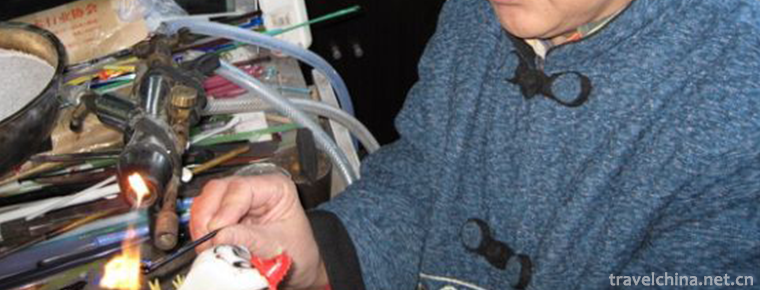
-
Old Beijing fried Morchella
The most famous famous food in Beijing is old Beijing tripe and Beijing roast duck. As for the oldest and most prosperous snacks in Beijing, belly burst is definitely the best among them..
Views: 162 Time 2018-10-27 -
Huanshui Bay Hot Spring Resort
Huanshui Bay Hot Spring Tourist Area of Anyang City is located at the exit of Anlin Expressway in Anyang Hi-tech Development Zone, Henan Province, close to National Highway 107 and the west side of Be.
Views: 305 Time 2019-01-17 -
Songxian Tianchishan National Forest Park
The Tianchishan National Forest Park in Songxian County, Luoyang City, is located in Xionger Mountains, northwest of Songxian County, Luoyang City, with a total area of 1716 hectares and a forest cove.
Views: 133 Time 2019-02-13 -
Legend of Biashla
Biashraze, also known as Ashraze, is the most representative Bimo Master of the Yi nationality. The legend of Ashraze has become divine through oral transmission and artistic processing of language.
Views: 129 Time 2019-04-04 -
Fuxin agate carving
Fuxin agate carving, traditional art of Fuxin County, Liaoning Province, is one of the national intangible cultural heritage..
Views: 127 Time 2019-04-30 -
Jingdezhen Handmade Porcelain Craft
Jingdezhen Handmade Porcelain Craft, the traditional handmade Porcelain Craft in Jingdezhen City, Jiangxi Province, is one of the national intangible cultural heritage..
Views: 123 Time 2019-05-08 -
King Yalu
King Yalu is the first long Miao heroic epic in history. It is usually chanted at the Miao spiritual ceremony. It is only handed down orally and has no written record. The history of the Miao people's.
Views: 146 Time 2019-07-10 -
The Lantern Festival
Lantern Festival, also known as the Lantern Festival, the Little January Festival, the Lantern Festival or the Lantern Festival, is one of the traditional festivals in China. The first month is the fi.
Views: 322 Time 2019-07-16 -
Aba Teachers University
Aba Teachers College, formerly Aba Teachers College, is a full-time general college approved by the State Council in December 1978. In 1993, it was renamed Aba Teachers College. The school was origina.
Views: 228 Time 2019-08-31 -
Beijing Jiaotong University
Beijing Jiaotong University is a national key university directly under the Ministry of Education, jointly constructed by the Ministry of Education, the Ministry of Transport, the Beijing Municipal Pe.
Views: 154 Time 2019-09-06 -
Deyang secondary industry
In 2018, the total industrial added value of Deyang City was 101.28 billion yuan, an increase of 9.8% over the previous year. By the end of the year, there were 1376 Industrial Enterprises above Designated Size, and the added value of industries above.
Views: 321 Time 2020-12-14 -
Guangan Airlines
There is no airport in Guang'an, but there are many airports around it. At the same time, Guang'an terminal building of Chongqing Jiangbei International Airport has been built in the urban area. Guang'an is 110 kilometers away from Chongqing Jian.
Views: 170 Time 2020-12-19
